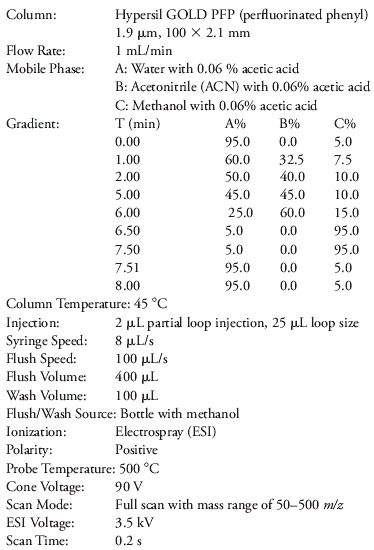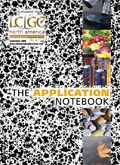Identification of Cannabinoids in Baked Goods by UHPLC-MS
Positively identify trace amounts of cannabinoids in a complex food matrix quickly, with minimal sample preparation and no chemical derivatization.
Positively identify trace amounts of cannabinoids in a complex food matrix quickly, with minimal sample preparation and no chemical derivatization.
Marijuana is the most common illegal drug in the United States, and each year U.S. law enforcement agencies seize more than two million pounds in various forms. Evidence submitted to forensic laboratories is screened for marijuana by microscopic inspection and simple chemical tests. Presumptive positive results are confirmed by using gas chromatography–mass spectrometry (GC–MS) to positively identify cannabinoids including Δ9 -tetrahydrocannabinol (THC), cannabinol, and cannabidiol. This approach works fairly well for leaf marijuana, hashish, hash oil, and residue collected from smoking paraphernalia.
GC–MS is less useful for confirming the presence of marijuana in complex food matrices, requiring extensive time-consuming sample preparation and often requiring greater amounts of the controlled substance than are present.
Alternatively, ultra high performance liquid chromatography with mass spectrometry detection (UHPLC–MS) can be used to identify marijuana cannabinoids in complex food matrices with simpler sample preparation, no derivatization, and less instrument clean up time. A laboratory can use UHPLC–MS to analyze baked goods for three cannabinoids of forensic importance. The cannabinoids are extracted, separated within 8 min on a Hypersil GOLD™ PFP 1.9 μm, 100 × 2.1 mm column and detected by a fast scanning single quadrupole mass spectrometer.
Experimental Conditions
The standard compounds THC, cannabidiol, and cannabinol were mixed and diluted to about 10 ppm with methanol. 2 mL methanol was added to 25 mg of baked-good material. It was vortexed for 30 s, allowed to settle for 2 min, and the supernatant filtered through a cotton-plugged Pasteur pipette. The filtrate was centrifuged at 12,000 rpm for 90 s, and filtered again. The second filtrate was diluted 50 fold with methanol prior to analysis.
Chromatographic analyses were performed using the Thermo Fisher Scientific Accela UHPLC system.
MS analysis was carried out on a Thermo Fisher Scientific MSQ Plus single quadrupole LC–MS detector with Xcalibur 2.05. The MS conditions were as follows:

Results
The cannabinoid standards elute with good resolution at 4.1 min (cannabidiol), 5.1 min (THC), and 5.4 min (cannabinol). They were detected by using full scans (50–500 m/z) of the single quadrupole mass spectrometer, and the extracted ion chromatograms from m/z 310.5–311.5 + 314.5–315.5. Molecular ions of each compound (m/z 315 for cannabidiol and THC and m/z 311 for cannabinol) are observed.
The brownie sample, known to contain THC, tested positive, demonstrating that sample preparation required for this LC–MS method is simpler, faster, and requires less sample than employed for the original casework.
After ten years in the forensic laboratory's training vault, cannabinoids in the cookie sample had degraded significantly, but by increasing the sample injection from 2 μL to 10 μL, THC was detected with good signal-to-noise.
Solvent blanks were analyzed after each sample run, with no apparent carryover from one run to the next.
Conclusions
Cannabinoids in baked goods can be identified using UHPLC–MS with minimal sample preparation. The preparation time (10 min) and run time (8 min) make this a very efficient analytical method.

Thermo Fisher Scientific, Inc.
355 River Oaks Parkway, San Jose, CA 95134
tel. (800)532-4752; fax (561)688-8731
Website: www.thermo.com
















